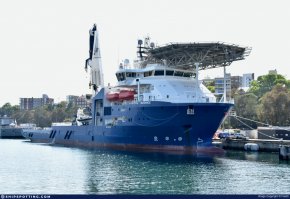TBH I do not really see a point in Australia ordered a design to be built to Australian specs, by a European shipyard. Firstly Australia would need to decide what it wants, what is needs, what a design absolutely has to have etc. It would then need to select which design best meets Australian requirements and there would need to be negotiations over the terms of the contract. This is something which would essentially have to happen, no matter where RAN warships were to be built. All of this would require time, which would also come before contracts could be signed and orders placed.
Pretty much the only possible exceptions were if Australia were to select a MOTS build, from a shipyard with an already established and active build programme, but there are two (or rather, at least two) important caveats with that. Australia would still have to negotiate the terms of any contract, and Australia would have to accept the ship fitout 'as is' which could mean a RAN vessel fitted with systems the RAN is unfamiliar with, and without any established training, support, maintenance or operational experience with.
Also, for any RAN order other than a MOTS order, detailed design work would need to be done, in order to fit the systems the RAN specifies. Again, this takes time.
As I and others have mentioned, repeatedly, there are reasons why a number of us consider the RAN getting new warships in service quickly as something which cannot happen. There are either a couple of years of work required before any contracts could be signed and then new warships built, or Australia would have to accept ships designed and built to the requirements of other navies (MOTS), fitted with kit the RAN is unfamiliar with. If the RAN did decide on the MOTS option, even with a 'Captains pick' and therefore not a competition between designers/builders, several years would be needed for the RAN to get personnel trained to operate the new kit, get a pool of maintainers trained and experienced to keep the kit operational, as well as time to establish the supply chains needed to keep everything in good working nick.
It is unfortunate, but there really is no way to shorten the process and still have an effective and useable warship brought into service.

